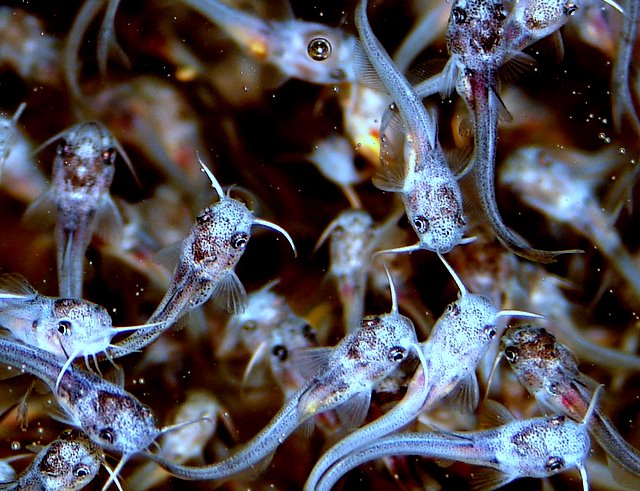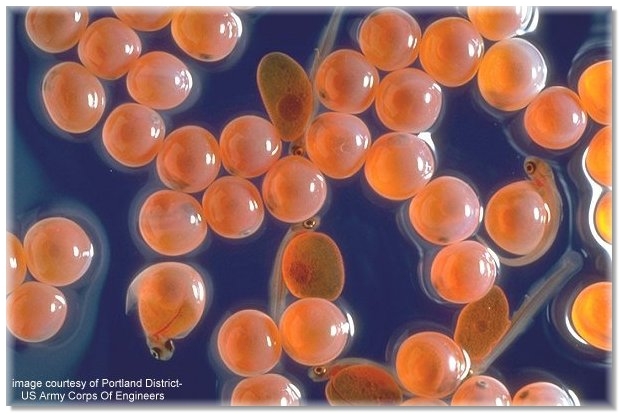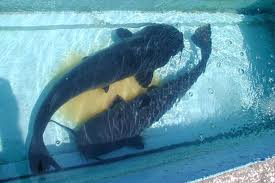Reproduction
 The
yellow bullhead reproduces by spawning in May or June when the
water temperature reach the 70 degree ferhenheit range (DNR
Minnesota). Through spawning, the yellow bullhead can
produce ample amounts of eggs (300-several thousands of eggs),
helping to ensure an evolutionary advantage against
environmental factors as including predation within their
habitat while producing offspring. The yellow bullheads
prefer to spawn in areas with weed banks at the bottom region of
the water habitat they are living in. (DNR
Wisconsin).
The
yellow bullhead reproduces by spawning in May or June when the
water temperature reach the 70 degree ferhenheit range (DNR
Minnesota). Through spawning, the yellow bullhead can
produce ample amounts of eggs (300-several thousands of eggs),
helping to ensure an evolutionary advantage against
environmental factors as including predation within their
habitat while producing offspring. The yellow bullheads
prefer to spawn in areas with weed banks at the bottom region of
the water habitat they are living in. (DNR
Wisconsin).
Bullheads will create nests to lay their eggs into for protection (Cairns et al 1990). For the yellow bullhead, it is the female who will create this nest by moving her lower fins over the sand, to create a small dish-sized nest. All nests will usually be by other structure such as a rock, log, or an area with a higher density of weeds- for even more protection (DNR Wisconsin).
After the eggs are laid, then the male will
 use
his milt (seminal fluid) to fertilize the eggs (Hamlett
2003). The bullheads are considered to be better parents
then other fish species. The male will watch over the eggs
during the 5-10 day period where they are in the nest.
After the eggs have hatched, both parents will look after their
young (DNR Ohio). Both
parents will circle the schools of recently hatched yellow
bullheads for about two weeks before the young are on their own.
The bullhead's will be fully mature within two to three years (Brown
et al 2011). The yellow bullhead will live up to 7
years old, and will reach about 2 pounds at an average of 8 to
10 inches (Rhodes et al 2009).
use
his milt (seminal fluid) to fertilize the eggs (Hamlett
2003). The bullheads are considered to be better parents
then other fish species. The male will watch over the eggs
during the 5-10 day period where they are in the nest.
After the eggs have hatched, both parents will look after their
young (DNR Ohio). Both
parents will circle the schools of recently hatched yellow
bullheads for about two weeks before the young are on their own.
The bullhead's will be fully mature within two to three years (Brown
et al 2011). The yellow bullhead will live up to 7
years old, and will reach about 2 pounds at an average of 8 to
10 inches (Rhodes et al 2009).
Continue on to see how the yellow bullhead
interacts with other species
or
Return to Home

